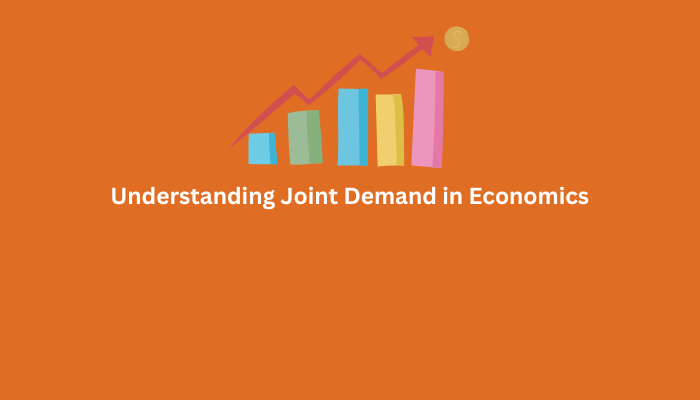Joint demand is a fundamental concept in economics, describing the relationship between two or more goods or services that are consumed together to fulfill a specific need or desire. This article delves into the meaning, function, examples, and implications of joint demand in economic theory and real-world applications.
What is Joint Demand?

Joint demand, also known as complementary demand, occurs when the demand for one good or service is closely linked with the demand for another.
These goods are interdependent, meaning an increase or decrease in the demand for one leads to a corresponding change in the demand for the other. For example, the demand for cars and petrol exhibits joint demand; as car demand rises, so does the demand for petrol to fuel those vehicles.
Characteristics of Joint Demand
Goods or services that exhibit joint demand share several key characteristics:
- They are consumed together to satisfy a particular need or desire.
- Changes in the price or availability of one product directly impact the demand for the complementary product.
- Jointly demanded goods often have negative cross elasticity of demand, meaning that an increase in the price of one leads to a decrease in the demand for the other, and vice versa.
Examples of Joint Demand
Numerous examples illustrate the concept of joint demand across various industries and sectors:
- Printers and ink cartridges: Printers require ink cartridges to function, leading to joint demand for both products.
- Cars and fuel: The demand for vehicles is closely tied to the demand for fuel, as cars require petrol to operate.
- Computers and operating systems: Computers rely on operating systems to function, resulting in joint demand for hardware and software products.
- Gillette’s Razor and Razor Blades: In the early 20th century, Gillette devised a shrewd pricing strategy to bolster sales of its razors and razor blades. By slashing razor prices while maintaining blade costs, Gillette spurred demand for both products. Consumers enticed by the affordable razors purchased more, consequently driving up the demand for razor blades.
- Cars and Gasoline: The correlation between cars and gasoline provides another apt example of joint demand. When gasoline prices surge, consumers may curtail car usage or explore alternative transportation options. Conversely, reduced gasoline prices often translate to heightened car sales, particularly for larger vehicles like SUVs and sports cars.
Joint Demand vs Derived Demand
Distinguishing between joint demand and derived demand is crucial:
- Joint demand delineates the interplay between complementary goods, where the demand for one product influences the demand for another.
- Derived demand, conversely, delves into the connection between raw materials and finished goods. In this scenario, raw material demand hinges on finished goods demand.
While complementary goods can thrive independently, raw materials may lose value if demand for finished goods wanes significantly.
Functions of Joint Demand
Joint demand serves several essential functions in economics and business:
- Strategic pricing decisions: Understanding joint demand helps businesses make informed pricing decisions for related products, ensuring they maintain overall demand.
- Investment decisions: Investors analyze joint demand relationships to identify investment opportunities and anticipate market trends.
- Risk management: Companies use joint demand as a strategy for hedging against potential losses in one product by investing in complementary goods.
- Benefits to consumers: Joint demand often leads to cost savings and convenience for consumers through bundled offerings and discounts.
- Economic development and stability: Joint demand contributes to economic growth and stability by creating interdependence among industries and sectors.
- Influence on government policies: Understanding joint demand dynamics informs policymakers’ decisions on regulations and policies to support economic growth and address societal concerns.
Implications of Joint Demand
Joint demand has far-reaching implications for the economy, stock market, consumers, and businesses:
- Economic impact: Joint demand influences output, employment, trade flows, and overall economic growth, making it a crucial consideration in policymaking and decision-making.
- Stock market effects: Investors analyze joint demand relationships to identify investment opportunities and predict stock price movements in related industries.
- Consumer benefits: Joint demand allows consumers to benefit from bundled offerings and lower prices for complementary goods, increasing their purchasing options and flexibility.
- Business strategies: Companies leverage joint demand to optimize pricing, manage risks, and drive innovation in product offerings to meet consumer needs effectively.
Conclusion
In conclusion, joint demand is a fundamental concept in economics that describes the interdependent relationship between two or more goods or services. Understanding joint demand is essential for businesses, investors, policymakers, and consumers to make informed decisions and navigate the complexities of the modern economy.
By recognizing the implications of joint demand, stakeholders can capitalize on opportunities, mitigate risks, and contribute to economic growth and stability.
Q&A
1. Is joint demand synonymous with complementary demand?
Indeed, joint demand and complementary demand are interchangeable terms denoting the relationship between goods consumed in tandem.
2. How do composite demand and joint demand differ?
Composite demand pertains to scenarios where a single source yields multiple products, whereas joint demand underscores the correlation between complementary goods.
3. What factors influence joint demand?
Price, preference, income, expectations, and substitutes are pivotal determinants shaping joint demand.
Understanding joint demand empowers businesses and investors to make judicious decisions, capitalizing on market dynamics to augment profitability.
4. How does joint demand affect the economy?
Joint demand influences economic output, employment, trade flows, and overall economic growth by creating interdependence among industries and sectors, shaping consumer behavior, and driving investment decisions.
Resources

I’m Mino, a forex trader with years of hands-on experience and a knack for market trends. My mission? To guide you through the complexities of forex trading and help you reach your financial aspirations. With personalized strategies and proven insights, I’ve empowered countless traders to navigate the markets confidently and achieve steady profits. Join me on the path to financial success in forex trading!
Don't Miss Pro Indicators and Trading Systems

